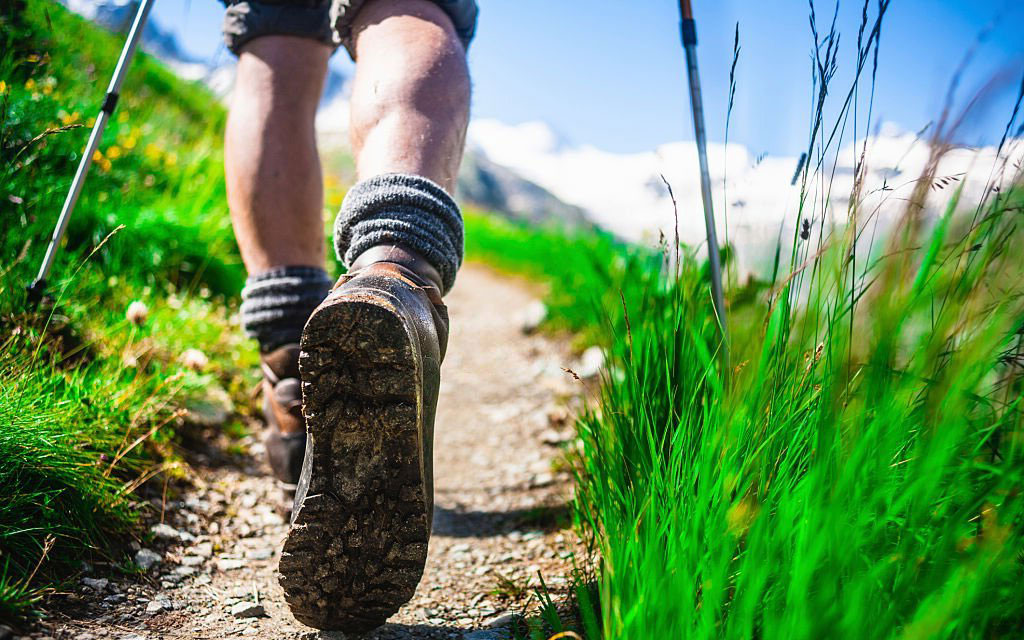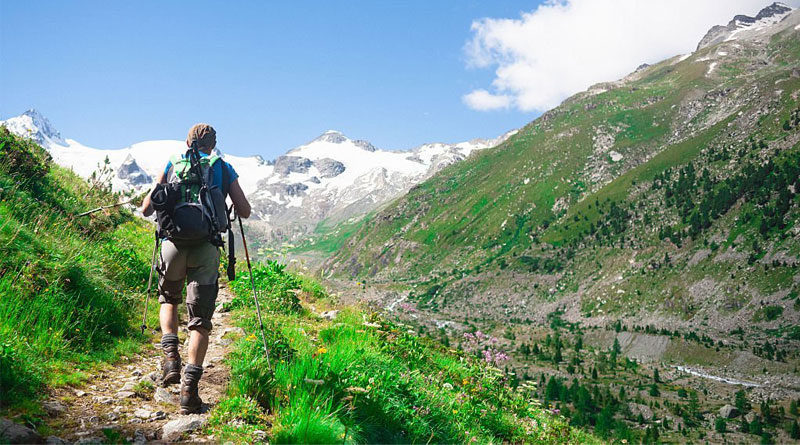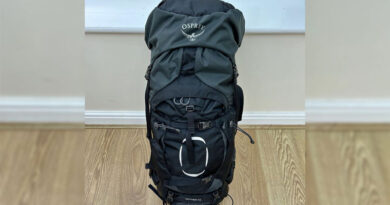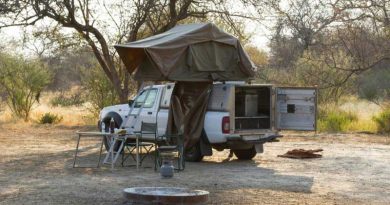Best Budget Hiking Boots of 2024
Hiking boots, no doubt, are the most critical piece of gear to your comfort and performance. If you think about it, a bad pair of boots can easily ruin your experience on the trail. That’s because you need a comfortable pair for all-day hiking. A good pair of hiking boots should provide a decent amount of padding, ankle support, and water protection. Additionally, your boots should be lightweight, reliable, and durable enough to withstand abuse. Unfortunately, all of these features come at a cost, and finding a budget pair with all the features is very challenging. However, you can still get a decent pair at a reasonable price with essential features that will get the job done.
Below is a list of cheap hiking boots that you can get without breaking the bank.
1. Merrell Moab 2

Weight (pair): 2 lbs. 4 oz.
Upper: Suede leather/mesh
Waterproof: M Select Dry
Category: Mid/Lightweight
Merrell Moab 2 is a pair of waterproof hiking boots that provide out-of-the-box comfort. This is the mid-height boot that provides good ankle support while still being lightweight. This mid-height makes this boot a very good option for those looking for multi-purpose utility across a variety of terrains. The interior of the boot is well-cushioned and the waterproof liner keeps your feet dry at stream crossings. Keep in mind that the waterproof liner is not very breathable and it will make your feet sweat more than the average pair. However, the boot never gives you blisters even during longer uses.
Comfort is the standout feature of these boots. They provide a very good amount of comfort at a reasonable price and they are ready for a hike straight from the box. There’s an EVA midsole, which is lightweight but it has compression-resistant cushioning for hiking all day long. You also get a good amount of padding in the tongue and around the collar. The lacing system on these boots is also very simple and easy to use. It is very easy to put these on and take them off, which makes them versatile. Finally, the boots are warm enough to stand up to cold days. They can be a good option to consider for winter hikes.
What I like: A very comfortable pair of boots at an affordable price.
What don’t: Lack stability and support for rough trails and heavy loads.
2. Columbia Bugaboot III

Weight (pair): 3 lbs. 1 oz.
Upper: Leather
Waterproof: Omni-Tech
Category: Heavyweight
Columbia Bugaboot III is a pair of budget winter hiking boots for men and women. They provide 200-gram insulation along with leather upper and a wide waterproof rand. This combination provides superior toe and side protection. This wide rand will keep your feet warm and dry in slush and snow. The Omni-Tech air-permeable membrane keeps Mother Nature’s elements out while still allowing the inside to breathe. Although this boot is styled as a PAC boot, it has a rockered sole that makes it easy to hike in. The lugs are deep enough and provide good traction on a variety of terrains. The lightweight midsole also gives you enough support when carrying heavy loads.
Bugaboot III is a reliable winter boot that you can also use for hiking. It has a cushioned midsole called Techlite and an outsole called Omni-Grip non-marking traction rubber. Both of these features make this boot a good option to consider for hiking. The midsole is well-cushioned and it gives long-lasting comfort. The outsole features lugs that provide good traction on surfaces like grass, mud, loose soil, and snow, of course. The boot also has a very stylish design, which makes it super versatile. You can even wear them around town during the winter season.
What I like: Very affordable, versatile, warm, and comfortable
What I don’t: Runs small. So sizing up is recommended.
3. Timberland Mt. Maddsen

Weight (pair): 3 lbs.
Upper: Full-grain leather
Waterproof: TimberDry
Category: Mid/Heavyweight
If you are looking for sturdy, waterproof, and full-grain leather boots at an affordable price, Timberland Mt. Maddsen is a good option to consider. The entire upper is made of full-grain leather that is high quality and it feels nice. On top of the leather, these boots do have a waterproof membrane. This upper is going to provide good protection against elements, especially rocks. However, it is slightly on the heftier side compared to synthetic uppers. The full-grain leather also means that it is going to have a longer break-in period. It will take quite a few miles to get flexible. The other downside is that leather tends to be hot. It doesn’t breathe well and these boots can be too hot for summer use.
These boots feature a classic lacing system, which is durable and will last a long time. The midsole on these boots is the EVA midsole. This midsole is going to provide some lightweight cushioning in the step. On the bottom, the boot offers a rubber outsole with a reasonable grip. The outsole is not as grippy as some other boots on the market but it does a pretty good job in most situations. The outsole provides a good grip on surfaces like rocks, gravel, and mud. In terms of protection and comfort, you don’t get a lot of cushioning. The toe box is not particularly narrow or wide. It’s very average.
What I like: Durable construction, easy to lace, affordable, good water protection
What I don’t: Poor breathability, too hot on warmer days, requires a long break-in period
See the Timberland Mt. Maddsen Mid
4. Columbia Fairbanks

Weight (pair): 1 lb. 15 oz.
Upper: Cordura nylon
Waterproof: Omni-Tech
Category: Lightweight
Columbia Fairbanks is the lightest and cheapest pair of winter boots. At first, the Fairbanks looks like heavy-duty boots but they are not as warm as full-fledged winter boots. The boot has a very soft feel while hiking and the outsole provide superb grip on a variety of surfaces. The outsole is Columbia’s Omni-Grip which is typically found in most of Columbia’s footwear. The lugs on these boots are smaller than a regular pair of hiking shoes and they are grippy around town but they do slip a little bit on snow-covered trails. These boots are rated to -25°F and they have a soft fuzzy inner with Omni-Heat technology. They will keep your feet warm during winter hikes.
The lightness comes from the lack of built-up in the sidewalls and they do seem a little bit flimsy. However, they are extremely comfortable when you’re out hiking. The good thing about these boots is that they are lightweight and aren’t bulky. You can wear them around town casually and your pant leg won’t get bunched up over the top of them. Keep in mind that the lacing system on these boots isn’t very good. When you tighten up the bottom part and as you move on up to tighten up the top, they just don’t stay tight at all and they loosen up really quickly. So the lacing system could be improved a little bit.
What I like: Cheapest winter boots that keep your feet warm, lightweight, and extremely comfortable
What I don’t: Questionable durability, the lacing system could be improved.
5. Salomon X Ultra 4

Weight (pair): 1 lb. 14.4 oz.
Upper: PU-coated leather/textile
Waterproof: Gore-Tex
Category: Lightweight
Salomon X Ultra 4 is a pair of lightweight and streamlined boots that offer support and stability without adding bulk like traditional backpacking boots. For backpacking and hiking, people prefer footwear that balances support, comfort, and durability. Sometimes it is tricky to find all of these features in a lightweight shoe but the X Ultra 4 really hits all the points that most people look for. The upper of the boot is made with a tough but synthetic material that is reinforced with PU-coated leather. It offers long-lasting construction that remains streamlined and light.
Inside, a Gore-Tex liner offers waterproof protection from the elements while maintaining breathability for performance in any kind of weather. The ADV-C chassis provides stability through the heel and forefoot without restricting natural movement. Underfoot, the EnergyCell foam midsole optimizes comfort and energy return and works together with the high-quality OrthoLite insoles to provide cushioning in each step. Contagrip MA outsoles offer confident traction over a multitude of terrain and conditions. Other great features include extra padding around the heel cup for added comfort, a gusseted tongue that helps to seal out debris, and a protected toe cap for trails with lots of roots and rocks.
What I like: Gore-Tex provides good waterproofing with breathability.
What I don’t: Not very budget-friendly
6. REI Co-op Flash
Weight (pair): 2 lb. 2 oz.
Upper: FirmaKnit
Waterproof: HydroWall
Category: Mid/Lightweight
The Flash is a lightweight and modern-looking boot that comes with a very competitive price tag. The Flash has a one-of-a-kind knit upper with a strong emphasis on sustainability. This upper is also very flexible and has the appearance of a running shoe. The stretchy gussets on the tongue give you a sock-life feel when you slide your foot in. Underfoot, you’ll find a nice, thick TrailBed insole. This insole provides excellent arch support. This thick insole is also cushioned and comfortable. Even when the boots are fully broken in, you can feel pressure points along the inside of both ankles when you lace them up. This is because the tongue and collar have thin padding. When you tighten the laces, the metal eyelet digs into the collar. However, you can alleviate the discomfort by loosening the laces.
These boots have average traction. The majority of the time, you will have adequate traction across a variety of surfaces, but they will fall short on rougher and harsher terrain. The lugs are shallow and bite quickly on softer surfaces such as mud. This causes less grip on steep climbs and descents. These boots, on the other hand, perform admirably on rocks. On rough terrain, the rubber outsole is resistant to chipping and tearing. If you plan on purchasing a pair of Flash, keep in mind that traction is a clear weakness of these boots.
What I like: High-quality knit upper, long-lasting rubber outsole, and a decent look
What I don’t: Significant pressure points along the inside of both ankles and poor traction on softer surfaces
7. Oboz Sapphire – Women’s

Weight (pair): 1 lb. 12.6 oz.
Upper: Nubuck leather
Waterproof: B-DRY
Category: Lightweight
The Oboz Sapphire is designed and tested with a woman’s fit and needs in mind. Once you put them on, you’ll want to wear them all day because they’re super comfortable with their women’s specific fit. The outsole provides excellent traction on gritty trails with the toothy lugs. The EVA midsole has just enough cushioning to be soft and flexible with rigid TPU support built in to reduce foot fatigue so you can live in them from dawn until dusk. On top of that, you get the famed O Fit insole. This is a major step up from what we see in standard sock liners and the arched support prevents overpronation. The heel cup keeps the back of your foot snug so there’s no rubbing. The plush foam under your heel and forefoot is comfortable and the whole thing is perforated for wicking.
Oboz put a lot of research and development into building the Sapphires, particularly designing them for the female foot. I typically prefer wider shoes because I like to have a lot of room for my toes to splay but the rest of my foot isn’t wide. So when I wear wide shoes, my heel is really sloppy. The fit of the Sapphire boots is perfect for me because they’re narrower at the heel and wider at the forefoot. The overall profile of this boot is low so they don’t look or feel bulky. The asymmetrical ankle height adapts to the irregularities of the human foot. You can lace these up tight for support but not feel constricted when you’re moving forward. The B-Dry waterproof lining means that you can walk downtown in the rain or handle those stream crossings with ease.
What I like: Women’s specific built, good traction, stable, durable, and stylish
What I don’t: Stiff out-of-the-box and takes time to break in
See the Oboz Sapphire – Women’s
8. Columbia Newton Ridge Plus

Weight (pair): 2 lbs.
Upper: Leather/textile
Waterproof: Omni-Tech
Category: Mid/Lightweight
The Newton Ridge Plus is lightweight and a budget pair of hiking shoes. The upper is made of 100% leather and textile. This full-grain leather and suede upper provide good waterproofing along with breathability. It holds up really well in rain, snow, puddles, and streams. However, if the water or snow is getting in from above the ankles, your feet may still get wet. The lacing system on these boots is very simple and straightforward. You get traditional lacing with metal eyelets. It is very easy and simple to use. The heel and toe areas are reinforced with rubber, which extends the life of the boot. Underfoot, you get a Tech-Lite midsole that enhances impact absorption and high energy return.
The outsole that comes with these boots is the Omni-Grip non-marking traction rubber outsole. It provides good traction on a variety of terrains like rocks, dirt, and gravel in both wet and dry conditions. This outsole is versatile enough to use for three-season hikes. The boot also has a classic mountaineering style and it is very durable. Because of this styling, these boots look very stiff out of the box and it seems like it will be very hard to break in these boots. However, the reality is quite the opposite. They take a very short break in period and they are not as stiff as they seem. The boots feel comfortable after a few miles.
What I like: Supper affordable, classic look, and comfortable
What I don’t: Below average breathability, can be hot for summer use
See the Columbia Newton Ridge Plus
Best Budget Hiking Boots: Comparison Table
| BOOTS | WEIGHT (PAIR) | UPPER | WATERPROOF | CATEGORY |
|---|---|---|---|---|
| Merrell Moab 2 | 2 lbs. 4 oz. | Suede leather/mesh | M Select Dry | Mid/Lightweight |
| Columbia Bugaboot III | 3 lbs. 1 oz. | Leather | Omni-Tech | Heavyweight |
| Timberland Mt. Maddsen | 3 lbs. | Full-grain leather | TimberDry | Mid/Heavyweight |
| Columbia Fairbanks | 1 lb. 15 oz. | Cordura nylon | Omni-Tech | Lightweight |
| Salomon X Ultra 4 | 1 lb. 14.4 oz. | PU-coated leather/textile | Gore-Tex | Lightweight |
| REI Co-op Flash | 2 lb. 2 oz. | FirmaKnit | HydroWall | Mid/Lightweight |
| Oboz Sapphire | 1 lb. 12.6 oz. | Nubuck leather | B-DRY | Lightweight |
| Newton Ridge Plus | 2 lbs. | Leather/textile | Omni-Tech | Mid/Lightweight |
Critical Hiking Boots Considerations

Choosing the right pair of hiking boots is critical to your comfort on the trail. Below are the key considerations when choosing hiking boots:
Hiking Boot Categories
Hiking boots come in three main categories; lightweight, midweight, and heavyweight.
- Lightweight: These boots are usually flexible but rugged enough to be used on most trail conditions. They are a good option for a day hike and short overnight backpacking trips. The uppers of these boots are more towards mesh and nylon with leather mixed in. These materials keep the weight low but don’t make them as durable as full leather boots. Due to their lightweight construction, they also require a little break-in period.
- Midweight: Midweight boots provide enough support to carry a heavy backpack with while still keeping your feet comfortable. This category is growing rapidly and is home to some good hiking boots like Scarpa Zodiac Plus GTX and Lowa Renegade. The boots provide solid underfoot support that makes the boot a little stiff. This stiffness also increases the break-in period. However, they are not as stiff as heavyweight boots.
- Heavyweight: As the name suggests, they are heavy, stiff, durable tough, and incredibly reliable. They are built for rocky terrains when you are carrying heavy loads. The upper is made of thick leather and it performs really well in wet conditions. However, it may become less breathable and warm during summer hikes. You can also opt for non-waterproof leather to increase breathability. These boots usually require a long break-in period. So don’t go directly for a long trip with a pair of new heavyweight boots. Spend some time and break them up first.
Weight
Hiking boots come in a variety of weight options. The over-the-ankle design is the heaviest one. It weighs around 3 pounds and around 2 pounds for trail runner-inspired designs. It is clear that the heaviest the boot is the more it will provide protection and performance. Heavy boots are more stable and supportive and they provide good durability over the long term. Lighter boots, on the other hand, provide less support and stability and wear out quickly. This is a problem especially when you are carrying a heavy backpack. However, lighter boots are a good option for thru-hikers and lightweight backpackers.
Waterproofing
The next thing to look at in a pair of boots is the waterproofing ability. That’s because, when you are hiking, you frequently come across streams, mud, and rain. A waterproof pair will keep your feet dry and nice throughout the hike. The best waterproof membrane available on the market is Gore-Tex. It provides superb water protection and it is also breathable. The only downside of Gore-Tex is that it comes at a higher cost. It is found only in high-end models of hiking boots. The only model on this list that has Gore-Tex is Salomon X Ultra 4. However, cheap hiking shoes usually come with in-house waterproof membranes like Omni-Tech, M Select Dry, B-Dry, etc. These waterproof membranes are not as good as Gore-Tex but they do a good job of keeping your feet dry.
Breathability
A waterproof boot will always be less breathable than a non-waterproof boot no matter what manufacturers say. The situation gets even worse with heavyweight leather boots with waterproof lining on the outside. These boots run too hot on summer days and can make you extremely uncomfortable. However, these types of boots can be a good option for winter hikes as they will keep your feet warm. If you are planning to hike in the summer, I’d suggest buying lightweight boots or shoes with mesh uppers. These boots provide good ventilation and are relatively breathable. You can also opt for non-waterproof boots if your feet sweat a lot.
Upper
The upper of the boot is the part that connects to the outsole. It directly correlates with the durability, water resistance, and breathability of the boot. Most boots available in the market come with synthetic, mesh, and leather uppers. However, high-end models sometimes come with one-piece leather constructions. The type of upper you choose will largely depend on your budget and the category of the boot. Most cheap hiking boots come with woven nylon (synthetic) with mesh panels. They provide good breathability but lack durability. However, they are lightweight and get the job done in most situations.
Midsole
Hiking usually involves carrying a heavy backpack that puts a lot of pressure on your feet. The midsole (combined with the outsole) plays an important role in absorbing shocks from impacts. It also provides extra protection from rocks and roots. The midsole can vary from thin to stiff and substantial depending on the design of the boot. Some common types of midsoles include EVA foam, PU, and a combination of both. However, most mid and lightweight boots come with an EVA midsole because it is cushy and soft. Heavier and stiffer boots, on the other hand, use PU midsole because it is durable foam and will last longer. The type you choose will depend on the terrain. EVA is good for well-groom trails while for tougher applications, PU is preferred.
Insoles
Insoles are important for getting a proper fit. You can remove your stock insole and replace it with some aftermarket models that are specific to your foot shape and size. The new model will have less or more cushion depending on your arch size and replacing them will improve the fit. Replacing insoles becomes even more critical when you have high arches.
Outsole and Traction
The outsole is the part of the boot that touches the ground. This is the part that distinguishes hiking boots from regular footwear. It is the part that provides traction when surfaces get rocky, slippery, and steep. Vibram dominates the outsole market just like Gore-Text dominates the waterproof membrane market. However, the manufacturer tailors the outsole for different brands, and hence not all Vibram outsole should be treated equally. Some brands will have aggressive lugs for grip in mud while other prioritizes sticky rubber for scrambling over rocks. Salomon is the only brand that doesn’t use Vibram sole. For all of their boot and shoe models, they instead use their in-house Contagrip brand.
Toe Protection
Toe protection is an essential feature of backpacking boots. The toes of hiking and backpacking boots are often reinforced with a rubber toe cap. This toe cap protects your toes when you accidentally kick a rock on the trail. Some manufacturers will occasionally remove or reduce this feature, and if you want to go light, toe protection is one area where you may have to compromise.
Lacing System
Most people don’t pay much attention to lacing but it plays an important role in the overall fit and comfort of the boot. Poor lacings are often prone to loosening and need frequent adjustments. It also causes hot spots and blisters. However, the lacing system of hiking boots can be replaced and there are quality options available. The easiest thing to do to check the quality of the lacing system is to check if it holds your foot well.





